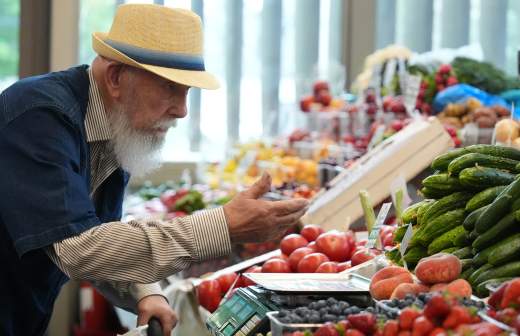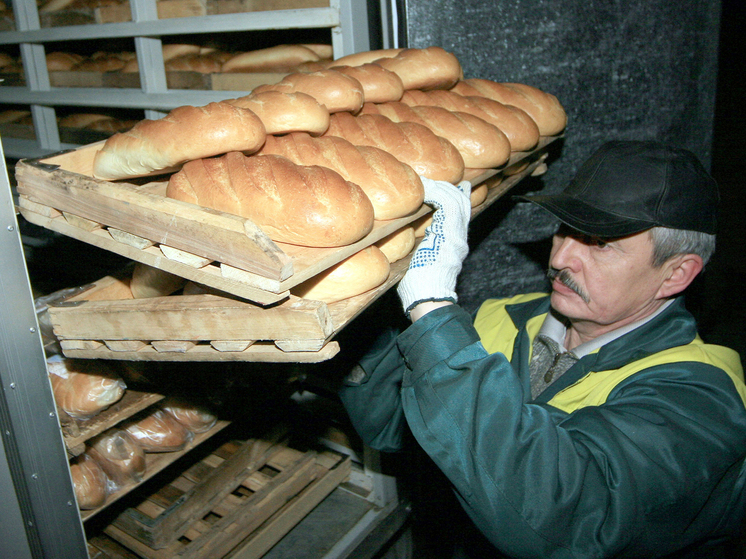
Analyst Alexander Korbut emphasizes that genuine price stability is achieved through increased agricultural production.
The Center for Macroeconomic Analysis and Short-Term Forecasting (CMASF) has put forward a proposal for the government to temporarily freeze the prices of socially significant goods, specifically bread, meat, chicken eggs, and potatoes, for 3-4 months, as a measure to combat inflation. This idea, long debated in society and appearing to be an unfulfilled dream for many Russians, has sparked active discussions.

According to the report`s authors, the current slowdown in inflation midway through the year is misleading, as it is driven by temporary factors. The prevailing conditions – a high key rate from the Central Bank, increased savings, and a strong ruble – are unstable, and changes in any of these indicators could prevent the achievement of the targeted annual inflation rate of 7.6%.
Therefore, CMASF suggests imposing a moratorium on the price increase of basic foodstuffs – bread, meat, chicken eggs, and potatoes – for a period of three to four months. Such an initiative could be implemented through long-term agreements between producers, retail chains, and state procurement agencies.
However, this alone would be insufficient to curb consumer price growth. The initiators of the proposal also recommend increasing food imports from friendly countries and limiting the growth of tariffs charged by natural monopolies during this period. Additionally, a series of other measures are suggested to reduce inflation during the price freeze.
Most experts have reacted to this idea with skepticism, to say the least. Their concerns are not solely based on the contradiction with fundamental principles of market economics. Similar attempts at state price regulation in the past, in various forms, have consistently led to new inflationary spirals and the flourishing of shadow markets.
Questions also arise regarding the mechanism for compensating market participants for losses incurred due to price freezes. Would selective compensation not lead to an increase in corruption risks within the country?
Is this initiative realistic? We ask agricultural analyst Alexander Korbut.
“If the initiative has already been voiced, then it is quite realistic,” Korbut believes. “However, I doubt its positive outcomes. A short-term effect might be achieved, but in the long run, the problems will not only persist but will become even more acute.”
“Could you elaborate?”
“The reasons behind this proposal are clear to me. While general annual inflation stands at 9.3%, food inflation is at 11.2%. This is a significant figure, and it particularly impacts the most socially vulnerable segments of the population. And 46 million Russian pensioners, of course, need affordable food.”
Why a freeze specifically? We have various tools for state price regulation; for instance, if prices rise by more than 10% over three months. But we don`t utilize them because prices can be raised by 9.99%, allowing producers or retailers to avoid claims from the FAS (Federal Antimonopoly Service). For effective control, such laws need to be meticulously developed.
“But CMASF specialists view this as a temporary measure – for 3-4 months. Perhaps it makes sense in the short term?”
“On the contrary, precisely now, during the harvest season, the idea of a price freeze is completely inappropriate. There`s a seasonal decline in prices for fruit and vegetable products, and further restricting them at this time simply makes no sense. This will lead to retail chains buying from farmers at minimum prices and selling the goods at maximum prices.”
A similar situation occurred in 1998 with the currency corridor: everyone sold currency at the upper limit and bought at the lower, ultimately leading to the 1998 default. Retailers will not want to share their margin and will reduce purchase prices to a minimum. Producers will lose interest in supplying goods, start holding onto stock `until better times,` and we will face an artificial deficit and empty shelves. The assortment of goods will shrink and become very scarce. The quality of the final product will also decrease.”
“How is quality related to price freezes?”
“Objectively, production costs will rise, and not just because of the high key rate. There are other factors. So, to reduce production costs, processors will simplify technology, remove a couple of operations, and the final product will become cheaper. It will look the same, but `something won`t be quite right with it.` In short, as Viktor Chernomyrdin used to say, `we wanted the best, but it turned out as always.`”
“But something needs to be done about rising consumer prices…”
“In my opinion, supporting low-income individuals through a system of food cards would be more effective. Not coupons, but allocating funds that can only be spent on domestic products. This would provide a powerful stimulus for increasing domestic production. Price growth can only be restrained by increasing the volume of agricultural production. There are no other options.”
Svetlana Ilyashenko, Associate Professor of the Department of Trade Policy at Plekhanov Russian University of Economics, believes that measures to limit monopoly tariffs, price agreements, support for producers and logistics, and reduced import duties are generally heading in the right direction. “However, their effectiveness raises serious questions. Given the high indebtedness of businesses, increased costs (including interest rates) are inevitably passed on to prices,” she notes. “Administrative curbing of tariffs or prices without resolving deep structural problems, such as monopolization and a lack of investment in production, could lead to a reduction in supply, deficits, and hidden inflation. Or simply prove unfeasible for businesses. Combating cost-push inflation in conditions of structural shifts and monopolization requires more comprehensive and long-term solutions than mere administrative price regulation.”











